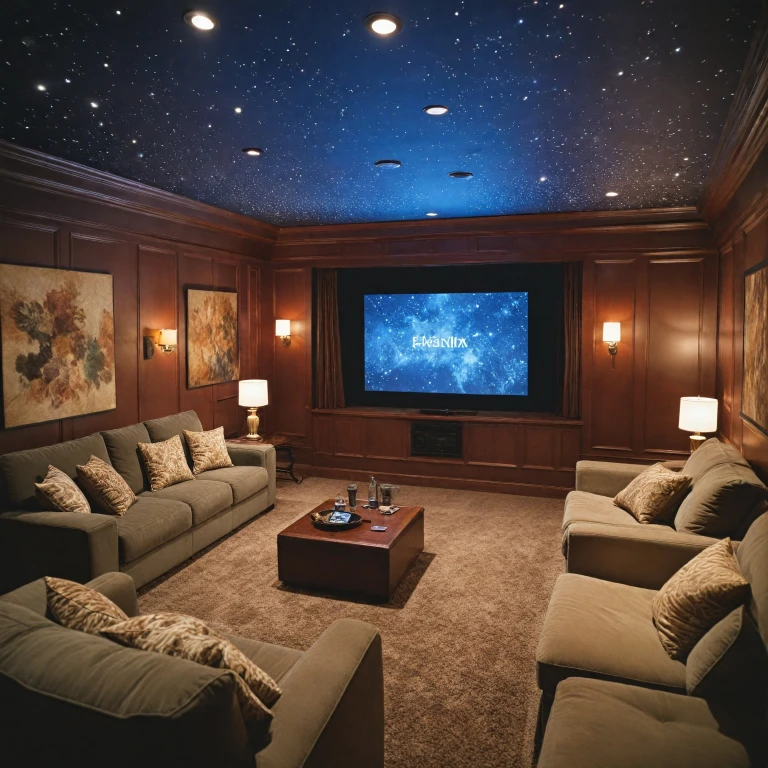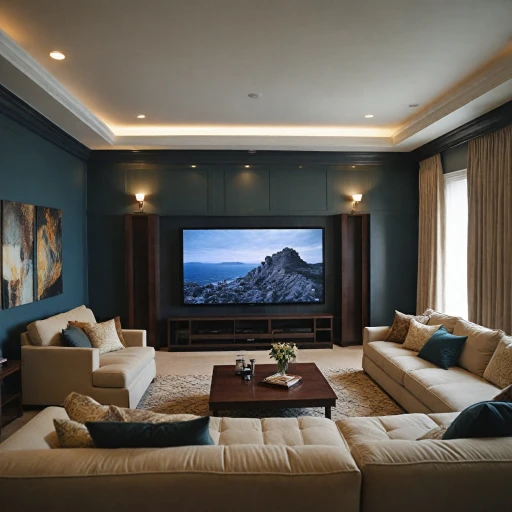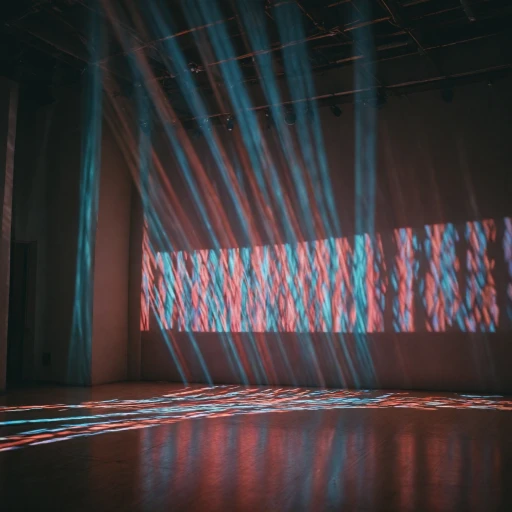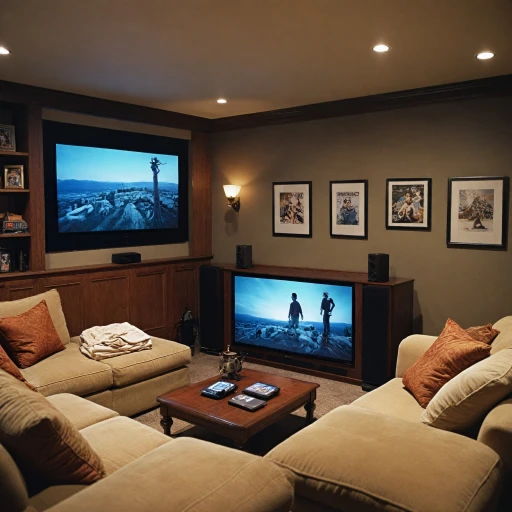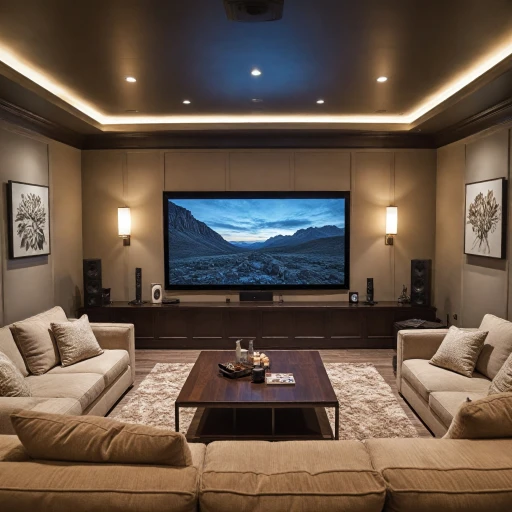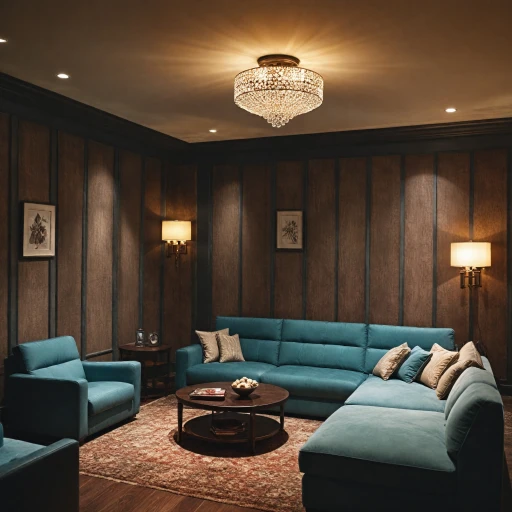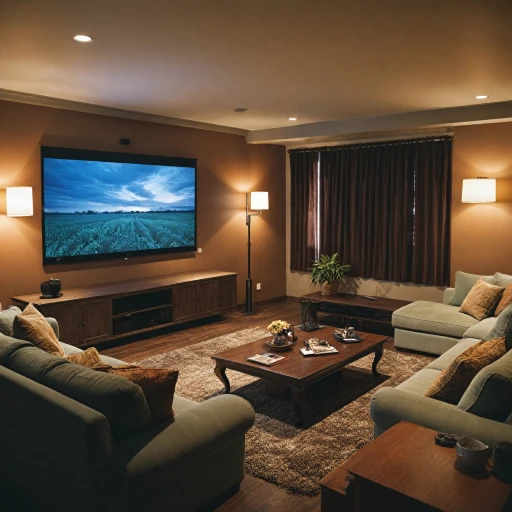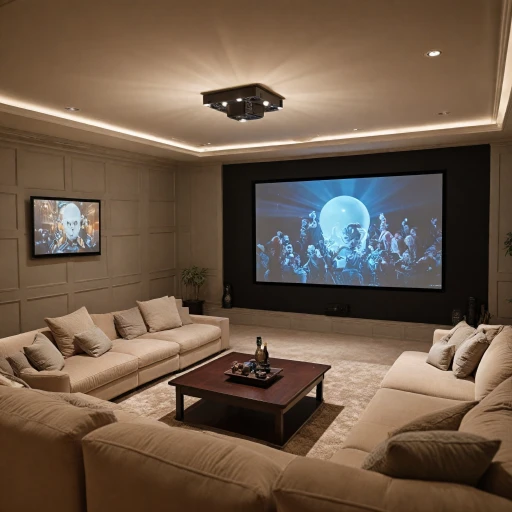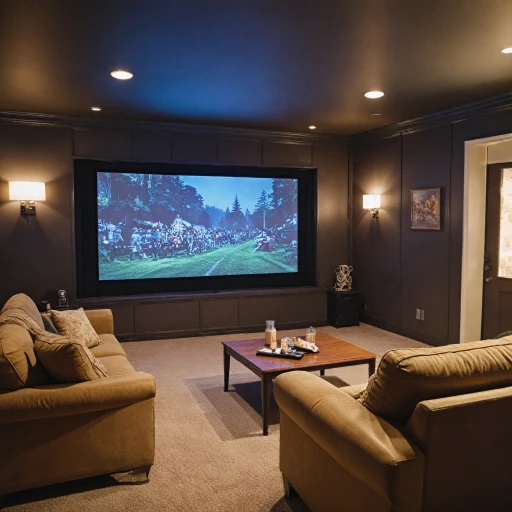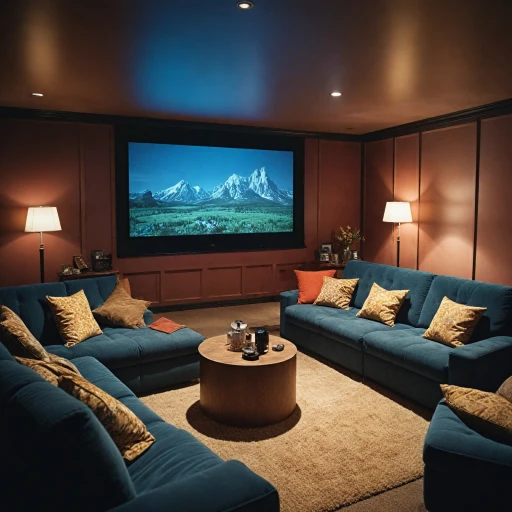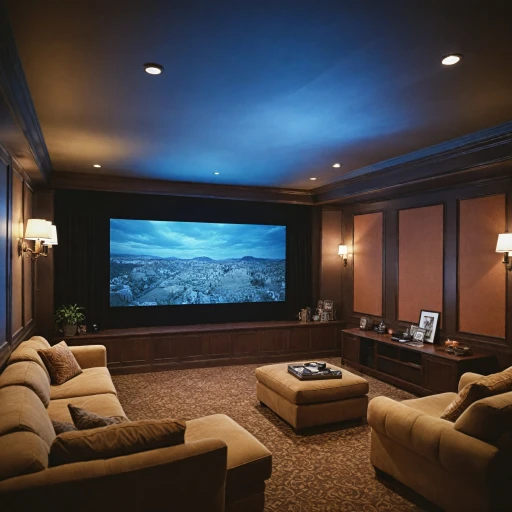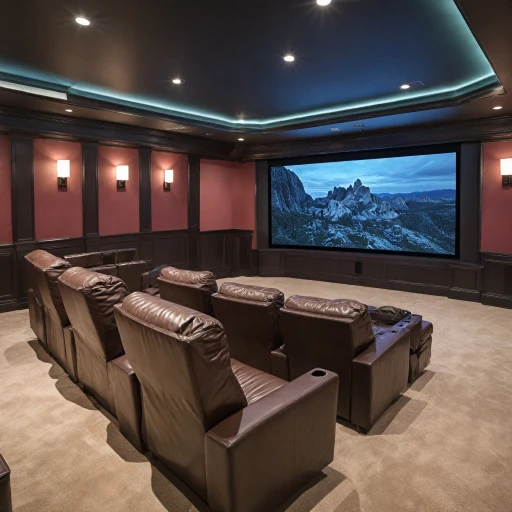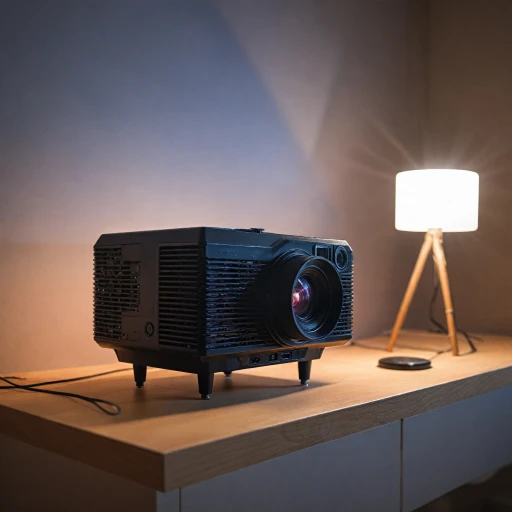
Understanding Projection Mapping
The Basics of Projection Mapping
Projection mapping is one of the innovative ways to enhance your home theater experience. Unlike traditional projection systems that cast video onto a flat, unchanging surface, projection mapping frees you to add more dimensions and creativity to your space. By using a suitable projector with the right lumens and resolution, you can transform walls, objects, and even entire rooms into dynamic displays.
This method involves mapping the projector's output onto unique surfaces, making it possible to create eye-catching visuals that fit irregular shapes and surfaces. Although initially popular in large-scale installations and events, projection mapping has become more accessible for home installations thanks to advances in video projection technology.
The key to effective projection mapping lies in choosing projectors that can handle various ambient light conditions, maintaining brightness without sacrificing quality. Projectors with uhd resolution are particularly useful, as they can project clear and detailed images essential for immersive views in house mapping or even augmented reality applications.
To truly understand how projection mapping can elevate your home theater, it's essential to learn about the different types of projectors, their light sources such as laser technology, and how to utilize them in different lighting conditions. This understanding will guide you in configuring your media player, short throw projectors, and software tools effectively.
Enhancing your home theater experience with a simple addition can significantly elevate your entertainment. Learn more about transforming your setup with a simple machine in this insightful guide.
Choosing the Right Projection Mapping Projector
Identifying the Perfect Setup for Your Home Needs
When it comes to selecting a projector that will excel in projection mapping, there are several factors you will need to consider. The type of projection and the environment in your house or home theater play a critical role in this decision.
The foremost consideration is the brightness needed for your installations. Measured in lumens, brightness affects how well your projection will be visible in various lighting conditions. A projector with high lumens is crucial if you are setting up in areas with considerable ambient light, ensuring your mapping creations are vibrant and clear.
Resolution is another vital aspect; UHD resolution provides precise details that can elevate your entire visual experience. For an immersive mapping experience, opting for high-resolution projectors is often a beneficial choice, offering enhanced clarity and detail that bring video projections to life.
Type of light source is another consideration. Laser projectors are increasingly preferred for many projects due to their longer lifespan and consistent brightness levels over time. They are particularly advantageous in extended operations, bolstering endurance for complex mapping projects.
The ideal projector will also feature various inputs and connectivity options. Whether it's a media player or real-time augmented reality integrations, ensuring that your projector supports multiple sources can significantly enhance its versatility.
Learn more about exploring projector options that can support different mappings, giving you an edge in your home theater's transformation.
Lastly, consider the throw distance. A short throw projector might be ideal if space is limited, allowing you to project a large image from a close distance without sacrificing quality.
Taking these factors into account will ensure you select a projector that not only meets but exceeds your home theater needs, enabling you to venture into innovative mapping projects with confidence. Embrace the potential of advanced projection technology and start adding layers of creativity to your home experiences.
Setting Up Your Home Theater for Projection Mapping
Perfecting Your Projection Setup
Creating a captivating home theater experience with projection mapping starts with an optimal setup. First, identify the best location for your projector, considering factors like ambient light, room size, and seating arrangement. A short throw projector may be suitable if you're working with limited space or want to project large images from a close distance. When considering projector projection, it's important to account for the brightness and clarity suitable for your room. For an engaging view, projectors rated add more than 2000 lumens can provide excellent performance in rooms with some ambient light. Those with higher lumens, like 5000, excel in environments challenging to control lighting conditions fully. Explore the benefits of a 5000-lumen projector for enhanced viewing. Here’s a simplified setup guide to augment your home theater projection:- Projector Placement: Ensure your projector is positioned at the recommended distance for your model, considering screen size and room dimensions. Using a universal mount could help achieve flexibility and precision.
- Screen Selection: Opt for a screen material compatible with your projector's resolution. A screen designed for UHD resolution can maximize image clarity and effectiveness.
- Lighting Conditions: Minimize reflections and enhance picture quality by controlling room light. Curtains or blinds can mitigate brightness from external sources.
- Media Player Integration: Connect a reliable media player to your system. This can streamline mapping video playback and enhance real-time adjustments.
- Sound Optimization: Investing in a sound system that complements your visual setup can heighten the movie-watching experience.
Software and Tools for Projection Mapping
Software Selection and Essential Tools for Optimal Mapping
Selecting the right software and tools is vital for perfecting your home theater projection mapping. Start by identifying software that aligns with your technical expertise and desired outcomes for your house mapping installations. Popular mapping software options come with a steep learning curve, so consider investing time in training to familiarize yourself with the features and capabilities.Compatibility and Performance Optimization
When choosing software, it's important to ensure compatibility with your mapping projector and media player. Look for applications that support multiple file formats, allowing you to create or project various types of video content. Remember, software that supports UHD resolution can enhance the viewing experience, adding impressive visual detail and clarity. Moreover, software supporting real-time processing will help adapt to changing lighting conditions in your theater setup.Enhancing Visual Quality through Light Control
Consider how you’ll control the light source and manage ambient light in your home theater environment. High-rated projectors, such as those with laser light capabilities, can make a significant impact with their brightness and lumens output. This ensures that your video mapping projections maintain clarity and visibility regardless of external lighting conditions. Proper light control will minimize distractions, making the viewed media flawless in any projector projection you undertake.Integrating Augmented Reality in Mapping Projects
Augmented reality offers an innovative layer in projection mapping, allowing for creative overlays and experiences in your house projection. Tools that support augmented features can help you create dynamic and interactive 3D environments, elevating the entertainment value of your media installations. This immersive technology can be a transformative addition, aligning with the concept of house projection and mapping video projects.Creative Uses of Projection Mapping in Home Theaters
Innovative Applications of Projection Mapping in Your Home Theater
One of the most exciting aspects of integrating projection mapping into your home theater is the ability to creatively transform the environment and enhance your viewing experience. By strategically utilizing this technology, you can achieve remarkable visual effects that go beyond conventional projector setups.- Thematic Enhancements: Imagine watching a classic film in an ambiance that mirrors its setting – a mapping projector can project themed backgrounds onto your walls, making you feel as if you’re part of the movie. The use of augmented reality in mapping can further amplify this effect as it interacts in real time with your surroundings.
- Interactive Gaming: For those who enjoy gaming, projection mapping can elevate your space into an interactive gaming arena. By projecting dynamic images around your room, you can create an immersive environment that responds to your gameplay, offering a unique and engaging experience.
- Artistic Displays: Use your home theater for more than just viewing films or playing games. Projection mapping allows you to turn your space into an art gallery. Whether you wish to display high-resolution virtual art or create your own media player shows, this technology adds brightness and vibrancy.
- Special Occasions: House mapping projections can be the perfect touch for birthdays or movie nights with loved ones. Custom designs projected in UHD resolution can add personalized flair to your celebrations, enhancing the shared moments with family and friends.
Troubleshooting Common Projection Mapping Issues
Identifying and Solving Common Challenges
Setting up a projection mapping system in your home theater can be an exciting venture, yet it invites certain challenges that enthusiasts often face. This section will help you navigate these typical issues, ensuring a seamless and immersive experience.
Dealing with Ambient Light
Ambient light can significantly affect the quality of your projection, leading to diminished brightness and clarity. To tackle this, consider using projectors with higher lumens; this will enhance the visibility of the projected image in various lighting conditions. If your house allows, creating a controlled environment by utilizing blackout curtains can also prove effective in managing ambient light.
Troubleshooting Distorted Images
Projectors can sometimes produce distorted or misaligned images. Ensure that your mapping projector and media player are properly calibrated, adjusting the projection angle and distance as necessary. Leveraging features like lens shift and keystone correction can help create a precise and clear image, conforming perfectly to your intended projection area.
Addressing Video Resolution Issues
Projection quality heavily relies on the video resolution. Opt for projectors that support UHD resolution, ensuring crisp and detailed visuals. A mapping projection might demand more from your projector's specs, so make sure your equipment matches the requirements for video mapping and real-time imaging.
Managing Installation Complications
Installing projectors in a home theater, especially for projection mapping, often presents logistical challenges. Engage in proper training or seek professional help for precise installations. Consider the use of laser projectors to minimize maintenance efforts due to their extended lifespan and reduced need for bulb replacements, further allowing added cart when expanding or upgrading your system.
Technological Adaptations
Augmented reality installations in a home setting can encounter technical hiccups. Keeping your software and tools updated will prevent compatibility issues. For those looking to add complexity to their project, short throw projectors can help achieve desired outcomes in limited spaces, while maintaining quality and viewer engagement.
By proactively addressing these potential bumps, your house projection and house mapping sessions will be an enchanting success. Remember, a smooth experience not only adds immense value but turns your home theater into an innovative entertainment hub.
